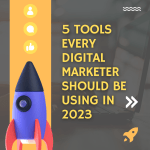
he digital marketing world is exploding with opportunities, and freelancers are riding this wave like never before. But here’s the thing – everyone and their neighbor seems to be calling themselves a digital marketer these days. So how do you rise above the noise and become a top-tier freelance digital marketer who commands premium rates and works with dream clients?
You’re about to discover the roadmap that separates the weekend warriors from the true professionals. This isn’t just another generic guide filled with fluff – it’s a comprehensive blueprint based on real-world experience and proven strategies that actually work.
Understanding the Digital Marketing Landscape
What is Freelance Digital Marketing?
Freelance digital marketing is like being a Swiss Army knife in the business world. You’re helping companies connect with their audience through various online channels, but you’re doing it on your own terms. Think of yourself as a digital matchmaker – you’re bringing businesses and their ideal customers together through strategic online efforts.
Unlike traditional employment, freelance digital marketing gives you the freedom to choose your clients, set your rates, and work from anywhere. But with great freedom comes great responsibility. You’re not just a marketer; you’re a business owner, client manager, and strategist all rolled into one.
Current Market Trends and Opportunities
The digital marketing industry is worth over $800 billion globally, and it’s growing faster than a viral TikTok video. Small businesses are increasingly realizing they need digital marketing expertise, but many can’t afford full-time employees. That’s where you come in.
Recent trends show that businesses are prioritizing authentic content, personalized customer experiences, and data-driven decision making. Voice search optimization, artificial intelligence integration, and privacy-focused marketing are becoming the new frontier. Are you ready to capitalize on these opportunities?
Essential Skills for Success
Technical Skills You Must Master
Here’s the brutal truth – you can’t fake expertise in digital marketing. Clients can smell inexperience from a mile away, and in today’s competitive landscape, mediocrity doesn’t pay the bills.
SEO and Content Marketing
Search Engine Optimization isn’t just about stuffing keywords into blog posts anymore. Modern SEO is about understanding user intent, creating valuable content that actually helps people, and building authority in your niche. You need to understand technical SEO, on-page optimization, link building strategies, and how to use tools like Google Analytics, Search Console, and keyword research platforms.
Content marketing goes hand-in-hand with SEO. You’re not just creating content; you’re crafting stories that resonate with your audience and drive them to take action. This means understanding different content formats, developing editorial calendars, and measuring content performance.
Social Media Management
Social media management is more complex than posting pretty pictures on Instagram. You need to understand platform-specific algorithms, audience behavior patterns, and how to create content that generates engagement and conversions. Each platform has its own personality – LinkedIn is your professional networking event, Instagram is your creative showcase, and TikTok is your experimental playground.
Pay-Per-Click Advertising
PPC advertising is where you can make or break a client’s budget in record time. Google Ads, Facebook Ads, LinkedIn Ads – each platform has its own learning curve and optimization strategies. You need to understand audience targeting, ad copy creation, landing page optimization, and most importantly, how to track and improve return on ad spend.
Soft Skills That Set You Apart
Technical skills get you in the door, but soft skills keep you there and help you command premium rates.
Communication and Client Management
Your ability to explain complex digital marketing concepts in simple terms can make or break your freelance career. Clients don’t want to hear about click-through rates and conversion funnels – they want to know how your work impacts their bottom line.
Effective communication also means setting clear expectations, providing regular updates, and being proactive about potential issues. Think of yourself as a translator between the technical world of digital marketing and the business world of your clients.
Project Management and Time Organization
Juggling multiple clients while maintaining quality standards requires exceptional organizational skills. You need systems for everything – client onboarding, project tracking, deadline management, and performance reporting. Tools like Asana, Trello, or Monday.com become your best friends.
Time management isn’t just about working efficiently; it’s about protecting your sanity and maintaining work-life balance. When you’re your own boss, it’s easy to either overwork or underperform. Finding that sweet spot is crucial for long-term success.
Building Your Professional Foundation
Creating Your Unique Value Proposition
What makes you different from the thousands of other freelance digital marketers out there? Your unique value proposition is your secret weapon in a crowded marketplace. Maybe you specialize in e-commerce businesses, have a background in psychology that helps with consumer behavior, or you’re particularly skilled at working with startups.
Your value proposition should be specific, measurable, and client-focused. Instead of saying “I help businesses grow,” try “I help SaaS startups increase their trial-to-paid conversion rate by 40% through strategic email marketing and onboarding optimization.”
Developing a Strong Portfolio
Your portfolio is your digital storefront. It’s often the first impression potential clients have of your work, so it better be impressive. But here’s what most freelancers get wrong – they focus on pretty designs instead of results.
Clients don’t care about how beautiful your graphics are; they care about how much money you made them or saved them. Your portfolio should showcase measurable results, process explanations, and problem-solving abilities.
Case Studies That Convert
Case studies are your portfolio’s heavy hitters. They tell a story that potential clients can relate to and envision for their own business. A good case study follows a simple structure: challenge, strategy, implementation, and results.
Don’t just list what you did; explain why you did it and what impact it had. Use specific numbers whenever possible. “Increased social media engagement” is weak. “Increased Instagram engagement rate from 2.1% to 8.7% within three months, resulting in 150% more qualified leads” is powerful.
Finding and Securing High-Quality Clients
Where to Find Premium Clients
Not all clients are created equal. Some will nickel and dime you over every expense, while others will appreciate your expertise and pay accordingly. The key is knowing where to find the good ones.
Freelance Platforms vs. Direct Outreach
Freelance platforms like Upwork and Fiverr can be good starting points, but they’re often race-to-the-bottom marketplaces where price trumps quality. The real money is in direct client relationships.
LinkedIn is goldmine for B2B clients. Join industry groups, share valuable content, and engage meaningfully with potential clients’ posts. Twitter can be surprisingly effective for certain niches, especially tech and e-commerce.
Networking events, both online and offline, can lead to high-value connections. Don’t go with a sales pitch; go to provide value and build relationships.
Crafting Winning Proposals
Your proposal is where you transition from “another freelancer” to “the solution to their problems.” Generic proposals get ignored. Personalized, research-backed proposals get responses.
Start by thoroughly researching the client’s business, current marketing efforts, and potential pain points. Reference specific aspects of their website, recent campaigns, or industry challenges. Show that you’ve done your homework and understand their unique situation.
Focus on outcomes, not activities. Instead of “I will post on social media three times per week,” try “I will implement a content strategy designed to increase your qualified lead generation by 25% within 90 days.”
Pricing Strategies for Maximum Profitability
Value-Based vs. Hourly Pricing
Hourly pricing is a trap that keeps many freelancers stuck in the feast-or-famine cycle. When you charge by the hour, you’re essentially trading time for money, and there are only 24 hours in a day.
Value-based pricing flips the script. Instead of charging for your time, you’re charging for the value you provide. If your SEO work generates an extra $50,000 in revenue for a client, shouldn’t your fee reflect that impact rather than the hours you spent?
This shift requires confidence in your abilities and clear communication of the value you provide. It also means you need to be selective about the projects you take on – not every client is a good fit for value-based pricing.
Negotiation Tactics That Work
Negotiation isn’t about winning or losing; it’s about finding a solution that works for both parties. When a client pushes back on your rates, don’t immediately lower your price. Instead, explore what’s driving their concern.
Sometimes budget constraints are real, and you can adjust the scope of work to fit their budget while maintaining your rates. Other times, they’re testing to see if you’ll fold under pressure. Stand firm on your value, but be flexible on how you deliver it.
Scaling Your Freelance Business
Building Long-Term Client Relationships
The most successful freelance digital marketers aren’t constantly hunting for new clients – they’re deepening relationships with existing ones. Long-term clients provide stability, higher rates (since they trust your expertise), and referrals to similar businesses.
Focus on becoming indispensable to your clients. Don’t just execute their requests; proactively identify opportunities and present solutions. Be the marketing advisor they turn to for strategic decisions, not just the person who manages their social media accounts.
Regular check-ins, performance reports, and strategic recommendations help maintain strong relationships. Remember, you’re not just a service provider; you’re a trusted partner in their business growth.
Creating Passive Income Streams
While client work provides immediate income, passive income streams create long-term financial stability. This might include creating digital courses, writing industry guides, developing marketing tools, or building affiliate partnerships.
The key is leveraging your expertise in ways that don’t require constant time investment. A comprehensive course on Facebook advertising might take months to create, but it can generate income for years with minimal ongoing effort.
Conclusion
Becoming a top freelance digital marketer isn’t about mastering every tool or platform – it’s about developing deep expertise in areas that matter to your ideal clients, building strong relationships, and continuously adapting to industry changes.
The path isn’t always smooth. You’ll face rejection, difficult clients, and constantly evolving platforms. But for those willing to put in the work and stay committed to excellence, freelance digital marketing offers unprecedented freedom and earning potential.
Remember, you’re not just building a freelance career; you’re building a business. Treat it with the professionalism and strategic thinking it deserves, and you’ll find yourself among the top tier of freelance digital marketers who command premium rates and work with dream clients.
The digital marketing world needs skilled professionals who can cut through the noise and deliver real results. The question isn’t whether there’s room for another freelance digital marketer – it’s whether you’re ready to claim your spot at the top.
READ ALSO: The Best Free Email Marketing Services That Actually Work









[…] READ ALSO: Become a Top Freelance Digital Marketer in Easy Steps […]